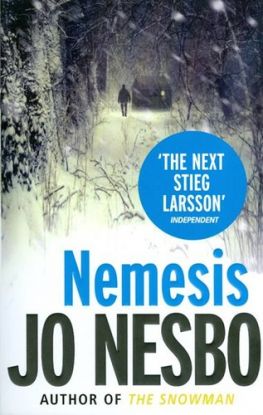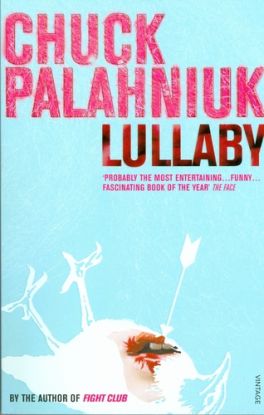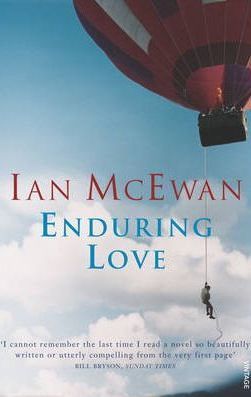Vintage Books
vydavateľstvo
The Prague Cemetery
Nineteenth-century Europe abounds with conspiracy both ghastly and mysterious. Jesuits plot against Freemasons. Italian priests are strangled with their own intestines. French criminals plan bombings by day and celebrate black masses by night. Every nation has its own secret service, perpetrating forgeries, plots, and massacres. But what if, behind all of these conspiracies, lay just one man?
Vypredané
12,30 €
12,95 €
Lemon Table
Winner of the Man Booker Prize for Fiction 2011. From the hairdessing salon where an old man measures out his life in haircuts, to the concert hall where a music lover carries out an obsessive campaign against those who cough in concerts; from the woman reads elaborate recipes to her sick husband as a substitute for sex, to the woman 'incarcerated' in an old people's home beginning a correspondence with an author that enriches both their lives - all Barnes' characters, in their different ways, square up to death and rage against the dying light.
Vypredané
10,44 €
10,99 €
Leopard
In the depths of winter, a killer stalks the city streets. His victims are two young women, both found with twenty-four inexplicable puncture wounds, both drowned in their own blood. The crime scenes offer no clues, the media is reaching fever pitch,
and the police are running out of options. There is only one man who can help them, and he doesn't want to be found. Deeply traumatised by the snowman investigation, which threatened the lives of those he holds most dear, Inspector Harry Hole has lo
st himself in the squalor of Hong Kong's opium dens. But with his father seriously ill in hospital, Harry reluctantly agrees to return to Oslo. He has no intention of working on the case, but his instinct takes over when a third victim is found bruta
lly murdered in a city park. The victims appear completely unconnected to one another, but it's not long before Harry makes a discovery: the women all spent the night in an isolated mountain hostel. And someone is picking off the guests one by one. A
heart-stopping thriller from the bestselling author of "The Snowman", "The Leopard" is an international phenomenon that will grip you until the final page.
Readbreast
Harry Hole, drunkard, loner and brilliant detective is reassigned to surveillance after a high profile mistake. He's bored by his new job until a report of a rare and unusual gun being fired sparks his interest because of its possible links to Neo Na
zi activity. Then a former soldier is found with his throat cut. Next Harry's former partner is murdered. Why had she been trying to reach Harry on the night her head was smashed in? The investigation leads Harry to suspect that the crimes have their
roots in the battlefields of Eastern Front during WWII. In a quest that takes him to South Africa and Vienna, Harry finds himself perpetually one step behind the killer. He will be both winner and loser by the novel's nail-biting conclusion. The Red
breast. He's your judge, jury and executioner...And he must be stopped.
Nemesis
Harry Hole and his team are in a race against time to crack the identity of a violent bank robber who always seems one step ahead.
Miss Smilla's Feeling for Snow
One snowy day in Copenhagen, six-year-old Isaiah falls to his death from a city rooftop. The police pronounce it an accident. But Isaiah's neighbour, Smilla, suspects murder. She embarks on a dangerous quest to find the truth, following a path of clues as clear to her as footsteps in the snow.
Vypredané
10,40 €
10,95 €
Catch-22
At the heart of Joseph Heller's bestselling novel, first published in 1961, is a satirical indictment of military madness and stupidity, and the desire of the ordinary man to survive it. It is the tale of the dangerously sane Captain Yossarian, who spends his time in Italy plotting to survive.
Vypredané
12,30 €
12,95 €
Hard-Boiled Wonderland and the End of the Word
A narrative particle accelerator that zooms between Wild Turkey Whiskey and Bob Dylan, unicorn skulls and voracious librarians, John Coltrane and Lord Jim. Science fiction, detective story and post-modern manifesto all rolled into one rip-roaring nov
el, Hard-boiled Wonderland and the End of the World is the tour de force that expanded Haruki Murakami's international following. Tracking one man's descent into the Kafkaesque underworld of contemporary Tokyo, Murakami unites East and West, tragedy
and farce, compassion and detachment, slang and philosophy.Upozornenie: Vzhľadom na častejšie obmeny vydaní tejto knihy v zahraničí, kus, ktorý vám zašleme, nemusí mať rovnakú obálku ako je zobrazená tu. Zobrazená obálka môže byť iba ilustračná. Obsa
h knihy aj cena budú však identické, bez ohľadu na obálku.
Lullaby
Carl Streator is a reporter investigating Sudden Infant Death Syndrome for a soft-news feature. After responding to several calls with paramedics, he notices that all the dead children were read the same poem from the same library book the night befo
re they died. It's a 'culling song' - an ancient African spell for euthanizing sick or old people. Researching it, he meets a woman who killed her own child with it accidentally. He himself accidentally killed his own wife and child with the same poe
m twenty years earlier. Together, the man and the woman must find and destroy all copies of this book, and try not to kill every rude sonofabitch that gets in their way. Lullaby is a comedy/drama/tragedy. In that order. It may also be Chuck Palahniuk
's best book yet.Upozornenie: Vzhľadom na častejšie obmeny vydaní tejto knihy v zahraničí, kus, ktorý vám zašleme, nemusí mať rovnakú obálku ako je zobrazená tu. Zobrazená obálka môže byť iba ilustračná. Obsah knihy aj cena budú však identické, bez o
hľadu na obálku.
Vypredané
10,37 €
10,92 €
Skywriting by Word of Mouth
This title is presented with an afterword by Yoko Ono and original illustrations by the author. John Lennon wrote the material collected in "Skywriting by Word of Mouth" during Yoko Ono's pregnancy with Sean Lennon. After John's assassination in 1980, his manuscript was stolen from the Lennon's home. "Skywriting" was finally published in 1986, and it displays all of Lennon's extraordinary creativity and inventiveness with language. It includes Lennon's only piece of autobiography, "The Ballad of John and Yoko" as well as short works of fiction, accounts of falling in love, marriage, the break-up of the Beatles and life in America.
Vypredané
10,44 €
10,99 €
Heart of dog
This title is presented with a new introduction by Andrey Kurkov. A rich, successful Moscow professor befriends a stray dog and attempts a scientific first by transplanting into it the testicles and pituitary gland of a recently deceased man. A distinctly worryingly human animal is now on the loose, and the professor's hitherto respectable life becomes a nightmare beyond endurance. An absurd and superbly comic story, this classic novel can also be read as a fierce parable of the Russian Revolution.
Vypredané
11,88 €
12,50 €
Bat
Harry is out of his depth. Detective Harry Hole is meant to keep out of trouble. A young Norwegian girl taking a gap year in Sydney has been murdered, and Harry has been sent to Australia to assist in any way he can. He's not supposed to get too involved. When the team unearths a string of unsolved murders and disappearances, nothing will stop Harry from finding out the truth. The hunt for a serial killer is on, but the murderer will talk only to Harry. He might just be the next victim. Appearing in English for the first time, "The Bat" is the legendary first novel from the worldwide phenomenon Jo Nesbo.
Volcano Lover
Based on the lives of Sir William Hamilton, his celebrated wife, Emma, and Lord Nelson, this novel is about sex and revolution, the fate of nature, art and the collector's obsession, and love. The author also wrote "The Benefactor", "Death Kit", "AIDS and its Metaphors" and "The Way We Live Now".
Vypredané
11,64 €
12,25 €
Enduring Love
One windy spring day in the Chilterns Joe Rose's calm, organized lifeis shattered by a ballooning accident. The afternoon, Rose reflects,could have ended in mere tragedy, but for his brief meeting with Jed Parry. Unknown to Rose, something passes between them - something that gives birth in Parry to an obsession so powerful that it will test to the limits Rose's beloved scientific rationalism, threaten the love ofhis wife Clarissa and drive him to the brink of murder and madness.
Vypredané
11,00 €
11,58 €
Five Moral Pieces
Embracing the web of multi-culturalism that has become a fact of contemporary life from New York to New Delhi, Eco argues that we are more connected to people of other traditions and customs than ever before, making tolerance the ultimate value in to
day's world. What good, he asks in a talk delivered during the Gulf War, does war do in a world where the flow of goods, services, and information is unstoppable, and the enemy is always behind the lines? What makes news today, who decides how it wil
l be disseminated contribute to the widespread disillusionment with politics in general? In the most personal of the essays, Eco recalls experiencing liberation from fascism in Italy as a boy, and examines the various historical forms of fascism, alw
ays with an eye toward such ugly manifestations today. And finally, in an intensely personal open letter to an Italian Cardinal, Eco reflects on a question underlying all the reflections in the book - what does it mean to be moral or ethical when one
doesn't believe in God? As thoughtful and subtle as they are pragmatic and relevant, these essays present one of the world's most important thinkers at the height of his critical powers.Upozornenie: Vzhľadom na častejšie obmeny vydaní tejto knihy v
zahraničí, kus, ktorý vám zašleme, nemusí mať rovnakú obálku ako je zobrazená tu. Zobrazená obálka môže byť iba ilustračná. Obsah knihy aj cena budú však identické, bez ohľadu na obálku.
Vypredané
11,00 €
11,58 €















